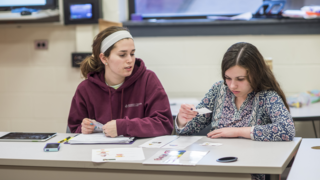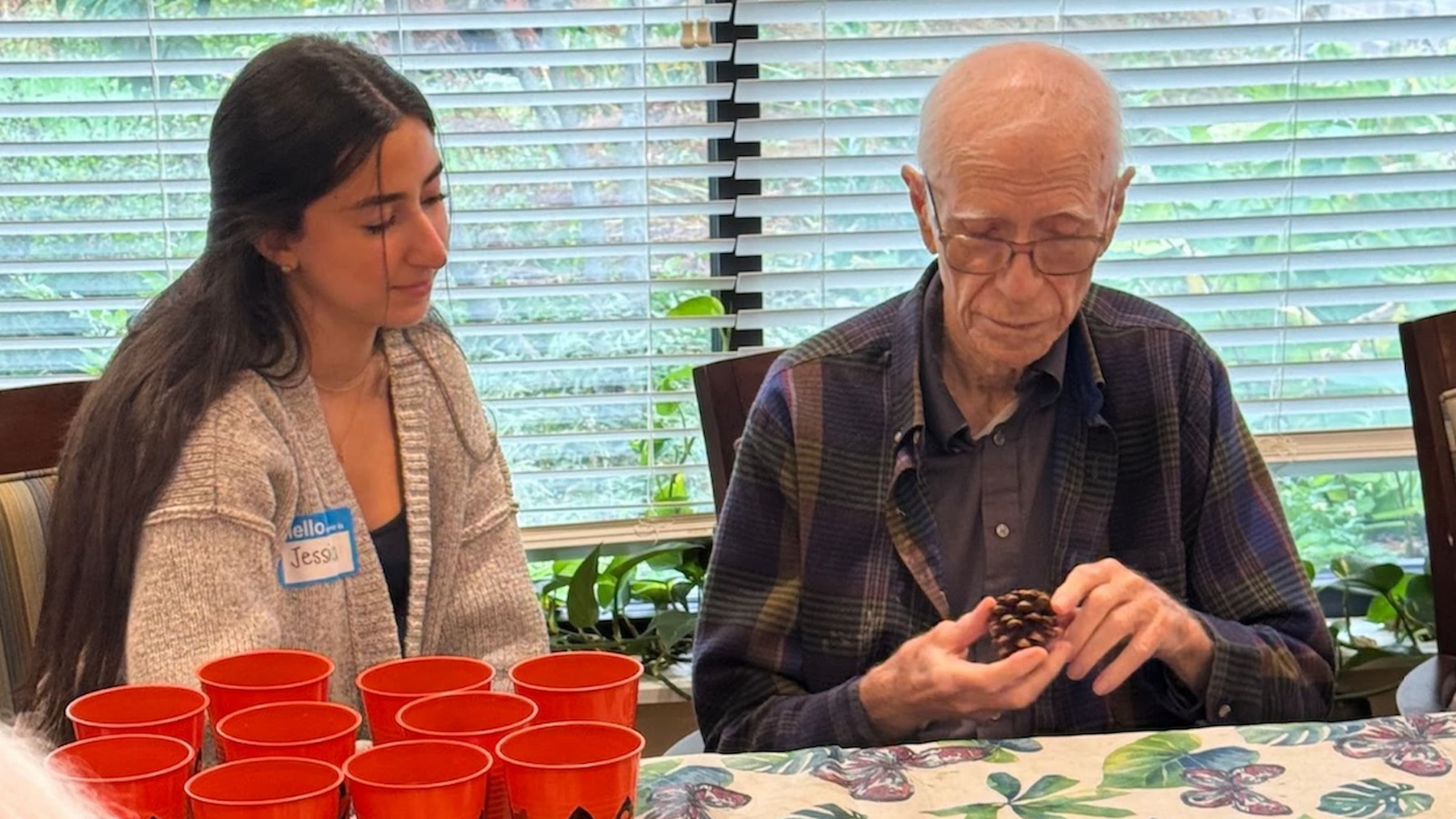Kinney Center Shifts to Virtual Curriculum and Services for Students and Clients
Students at the Kinney Center have shifted to create a virtual curriculum for clients with autism, while their studies to become certified behavioral analysts have also moved to an online environment.

- Students training to become certified behavioral analysts have to undergo up to 2,000 hours of supervision – including in-person sessions with clients and individual coursework – which can be completed at the Kinney Center.
- Regular in-person sessions with clients with autism have had to transition to virtual sessions with more in-depth instructions, pre-recorded programs, and take-home boxes with materials normally provided at the Center.
- Regular in-person sessions with clients with autism have had to transition to virtual sessions with more in-depth instructions, pre-recorded programs, and take-home boxes with materials normally provided at the Center.
Each year, Saint Joseph’s students working with the Kinney Center for Autism Education and Support undergo supervision as part of their overall training to become certified behavioral analysts. This year, because of the COVID-19 pandemic, that supervision is being done virtually.
Launched in 2009, the Kinney Center provides social skills programs, mentoring, resources and advocacy support for individuals with Autism Spectrum Disorder (ASD) and their families. It also helps to educate, train and supervise students who are interested in working in the autism field, such as those majoring in autism behavioral studies or special education.
“Ensuring that students have access to supervision is an important piece of becoming a professional in the field of behavior analysis,” says Samantha Riggleman, Ph.D. BCBA, assistant professor in the Department of Special Education. “Much like teachers, behavior analysts have had to complete their supervision virtually this semester due to COVID restrictions."
Riggleman explains that students seeking certification have found unique ways to safely provide services to clients while also receiving supervision.
“In a normal year, we would be assigned three to five clients to help them build social and behavioral skills,” says Emily Ring ’20, an autism behavioral studies major and a current graduate assistant at the Kinney Center. “We’d be in charge of picking the skills for our clients and training the staff to implement those skills. We’d graph the behavior and skill data, and update the program as skills were mastered and new ones were needed.”
These sessions of skill building and behavior management were usually done in person. “Students might have done hand-over-hand activities, and shown step-by-step instructions to clients, to help them with cooking classes or hygiene, for example,” says Jessica Joseph, Ph.D., BCBA, director of programs at the Kinney Center. “Now, students are doing the same thing, but virtually.”
“In person you can do a lot more hands-on prompting to guide the client through their tasks,” says Ring. “With Zoom, you can’t do much of that. So our instructions really involve breaking down the steps. We walk the clients through the task in a much slower manner to make sure they can do it. We talk them through it, and make sure each step is in-depth and detailed, because we’re their only guide.”
Both undergraduate and graduate students must complete between 1,500 and 2,000 hours of supervision with coursework. The undergraduates will then go on to sit for the exam to be Board Certified Assistant Behavioral Analysts (BCABAs), and graduates will test to become Board Certified Behavioral Analysts (BCBAs). Their coursework includes developing a skills class for their clients, collecting data during classes, graphing and analyzing that data, and reading articles and reviews relative to their clients.
Ring, who graduated from St. Joe’s in May 2020 and will take the exam for her BCABA this December, explains how students were able to complete their hours after the pandemic hit. “The pandemic started during spring break,” she explains. “Programs specifically were cut off, and we were at a standstill. So we finished graphing the data we had, wrote summaries up for our clients, and immediately got extra assignments to get those hours.” Supervisors created modules online for students, giving them task list items to complete before their exam, and having them listen to webinars and podcasts.
“We want our clients to be able to take Kinney home with them.”
Jessica Joseph, Ph.D.
Director of Programs at the Kinney CenterAs time has gone on, students and staff began developing virtual skills classes for fall programming. “We made pre-recorded videos for families who couldn’t attend live sessions,” says Sarah Dattilo ’19, a second-year graduate student. “We organized materials and created boxes we ended up sending to families. We put all the materials the families would need for the program in the boxes, to make sessions easier and more convenient.” Dattilo also assists with the sports and recreation program, which also changed when sessions became virtual. “Usually we’d do different activities on Saturdays, like basketball or karate,” says Dattilo. “Now, we’ve had to alter our approach. We ran a 30-minute workout session one day, and today was freeze-dance. We just want to get our clients up and moving, virtually.”
Sports and recreation eventually led to the creation of a virtual version of Kinney’s annual summer camp. Students and staff created pre-recorded sessions for Camp Kinney, so that if a parent was working and could not get the client to virtual camp during the scheduled time, they were able to access the activities at any time they wanted. Any materials that would have been provided at the camp were organized, labeled, boxed up, and sent to each client’s home. This practice has continued into the fall semester.
“We provide clients with a home package to help them with their daily routines and schedules,” says Joseph. “We offer advice for what to do when a parent is working, or when a sibling is home with you because schools are virtual. We want our clients to be able to take Kinney home with them.”
Students are able to find advantages in this new virtual environment. “I was surprised at how much went into planning,” says Ring, referring to how programs are set up and prepared before each semester. “I knew a lot went into planning, but I never expected that much, especially with Kinney Camp. Planning for the camp helped me to plan other programs for the fall that we’ll be using as well.”
Dattilo admits that although this has been difficult, it has forced her and other students to be more creative. “We’re forced to think outside the box, which is so important in this field, because we have to adapt and think of different ways to teach a client a skill,” she explains. “Tapping into that area has been an advantage of being virtual.”



